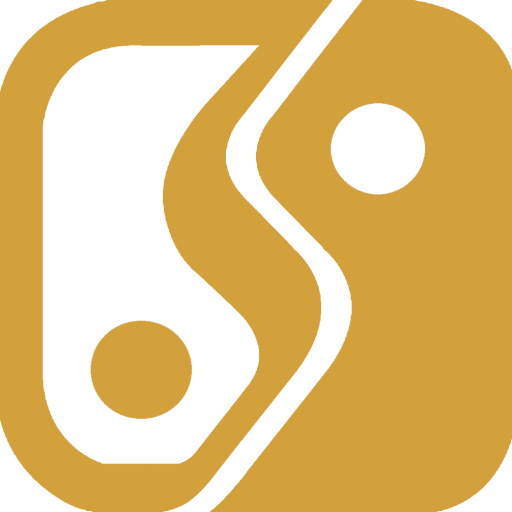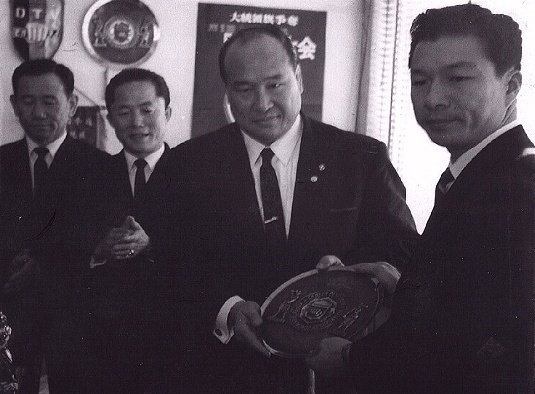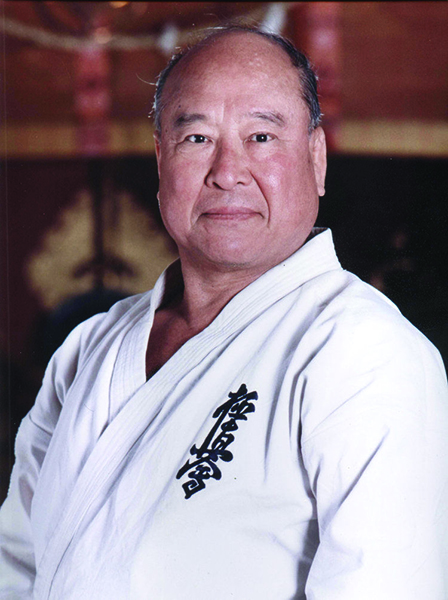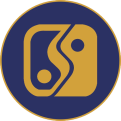
- Direct message
- Report
- prev
- next
Nationality
information
-
ID numberKO10018741
-
Full nameMASUTATSU OYAMA
-
native name大山 倍達
-
NicknameMas Oyama
-
Province/stateZenrahoku, SOUTH KOREA
-
Birth date1924-07-28
Biography
MASUTATSU OYAMA
Founder of Kyokushin Karate
Masutatsu Ōyama (大山 倍達, Ōyama Masutatsu, July 27, 1923 – April 26, 1994), more commonly known as Mas Oyama, was a South Korean karate master who founded Kyokushin Karate, considered the first and most influential style of full contact karate. Oyama was an ethnic Korean; he was born Choi Yeong-eui (Korean: 최영의; Hanja: 崔永宜) and spent most of his life in Japan. He acquired Japanese citizenship in 1968.
Early life
Mas Oyama was born as Choi Yeong-eui (최영의) in Kintei, Korea, Empire of Japan. At a young age, he was sent to Manchukuo to live on his sister's farm. Oyama began studying Chinese martial arts at age 9 from a Chinese farmer who was working on the farm. His family name was Lee and Oyama said he was his very first teacher. The story of the young Oyama's life is written in his earlier books. His family was of the landed-gentry class, and his father, Choi Seung-hyun, writing under the pen name of "Hakheon," was a noted composer of classical Chinese poetry.
In March 1938, Oyama left for Japan following his brother who enrolled in the Imperial Japanese Army’s Yamanashi Aviation School. Sometime during his time in Japan, Choi Yeong-eui chose his Japanese name, Oyama Masutatsu (大山 倍達), which is a transliteration of Baedal (倍達). Baedal was an ancient Korean kingdom known in Japan during Oyama's time as "Ancient Joseon".
One story of Oyama's youth involves Lee giving young Oyama a seed which he was to plant; when it sprouted, he was to jump over it one hundred times every day. As the seed grew and became a plant, Oyama later said, "I was able to jump between walls back and forth easily." The writer, Ikki Kajiwara, and the publisher of the comics based the story on the life experience Oyama spoke to them about – thus the title became "Karate Baka Ichidai" (Karate Fanatic).
In 1963, Oyama wrote What is Karate, which became a best-seller. It was translated into Hungarian, French, and English.
Post-World War II
In 1945 after the war ended, Oyama left the aviation school. He finally found a place to live in Tokyo. This is where he met his future wife Oyama Chiyako (大山 置弥子) whose mother ran a dormitory for university students.
In 1946, Oyama enrolled in Waseda University School of Education to study sports science.
Wanting the best in instruction, he contacted the Shotokan dojo (Karate school) operated by Gigō Funakoshi, the third son of karate master and Shotokan founder Gichin Funakoshi. He became a student, and began his lifelong career in karate. To stay focused he remained isolated and trained in solitude.
Oyama later attended Takushoku University in Tokyo and was accepted as a student at the dojo of Gichin Funakoshi where he trained for two years. Oyama then studied Gōjū-ryū karate for several years with Nei-chu So (소 나이 추 / 曺(曹)寧柱, 1908–1996) who was a fellow Korean from Oyama's native province and a senior student of the system's founder, Chojun Miyagi.
At sometime between 1946 and 1950, Mas Oyama trained at Kanbukan, a dojo founded by high ranking students of Kanken Toyama known for its large degree of Zainichi Korean membership. Nei-chu So was also an active trainee at Kanbukan and likely taught Goju-Ryu to Oyama there. In Kanbukan, Karate was practised with Bōgu/protective gear (Bogutsuki Karate), which allowed for delivering strikes with full force, and may have influenced Oyama's full contact fighting mentality. However, sources say that Oyama had little interest in Bogutsuki Karate as a sport. Oyama did consider using protective equipment at some point though.
During this time he also went around Tokyo getting in fights with the U.S. Military Police. He later reminisced those times in a television interview, "Itsumitemo Haran Banjyo" (Nihon Television), "I lost many friends during the war- the very morning of their departure as Kamikaze pilots, we had breakfast together and in the evening their seats were empty. After the war ended, I was angry- so I fought as many U.S. military as I could, until my portrait was all over the police station." Oyama retreated to a lone mountain for solace to train his mind and body. He set out to spend three years on Mt. Minobu in Yamanashi Prefecture, Japan. Oyama built a shack on the side of the mountain. One of his students named Yashiro accompanied him, but after the rigors of this isolated training, with no modern conveniences, the student snuck away one night, and left Oyama alone. With only monthly visits from a friend in the town of Tateyama in Chiba Prefecture, the loneliness and harsh training became grueling. Oyama remained on the mountain for fourteen months, and returned to Tokyo a much stronger and fiercer karateka.
Oyama greatly credited his reading of The Book of Five Rings by Miyamoto Musashi (a famous Japanese swordsman) for changing his life completely. He recounts this book as being his only reading material during his mountain training years.
He was forced to leave his mountain retreat after his sponsor had stopped supporting him. Months later, after he had won the Karate Section of Japanese National Martial Arts Championships, he was distraught that he had not reached his original goal to train in the mountains for three years, so he went into solitude again, this time on Mt. Kiyosumi in Chiba Prefecture, where he trained for 18 months.
Founding Kyokushin
In 1953, Oyama opened his own karate dojo, named Oyama Dojo (form of Gōjū-ryū), in Tokyo but continued to travel around Japan and the world giving martial arts demonstrations, which included knocking live bulls unconscious with his bare hands (sometimes grabbing them by the horn, and snapping the horn off). His dojo was first located outside in an empty lot but eventually moved into a ballet school in 1956. The senior instructors under him were T. Nakamura, K. Mizushima, E. Yasuda, M. Ishibashi, and T. Minamimoto. Oyama's own curriculum soon developed a reputation as a tough, intense, hard-hitting but practical style which was finally named Kyokushinkai (Japan Karate-Do Kyokushinkai), which means 'the ultimate truth', in a ceremony in 1957. He also developed a reputation for being 'rough' with his students, as the training sessions were grueling and students injuring themselves in practice fighting (kumite) was quite common. Along with practice fighting that distinguished Oyama's teaching style from other karate schools, emphasis on breaking objects such as boards, tiles, or bricks to measure one's offensive ability became Kyokushin's trademark. Oyama believed in the practical application of karate and declared that ignoring 'breaking practice is no more useful than a fruit tree that bears no fruit.' As the reputation of the dojo grew, students were attracted to come to train there from inside and outside Japan and the number of students grew. Many of the eventual senior leaders of today's various Kyokushin-based organisations began training in the style during this time. In 1964, Oyama moved the dojo into the building that would, from then on’ serve as the Kyokushin home dojo and world headquarters. In connection with this, he also formally founded the 'International Karate Organization Kyokushin kaikan' (commonly abbreviated to IKO or IKOK) to organise the many schools that were by then teaching the kyokushin style.
In 1961, at the All-Japan Student Open Karate Championship, one of Oyama's students, Tadashi Nakamura, at 19 years old (1961) made his first tournament appearance, where he was placed first. Nakamura later became Mas Oyama's Chief Instructor as referenced in Mas Oyama's book, "This is Karate." In 1969, Oyama staged the first All-Japan Full Contact Karate Open Championships which took Japan by storm and Terutomo Yamazaki became the first champion, which have been held every year since. In 1975, the first World Full Contact Karate Open Championships were held in Tokyo. World championships have been held at four-yearly intervals since. After formally establishing Kyokushin-kai, Oyama directed the organization through a period of expansion. Oyama and his staff of hand-picked instructors displayed great ability in marketing the style and gaining new members. Oyama would choose an instructor to open a dojo in another town or city in Japan, whereupon the instructor would move to that town, and, typically demonstrate his karate skills in public places, such as at the civic gymnasium, the local police gym (where many judo students would practice), a local park, or conduct martial arts demonstrations at local festivals or school events. In this way, the instructor would soon gain a few students for his new dojo. After that, word of mouth would spread through the local area until the dojo had a dedicated core of students. Oyama also sent instructors to other countries such as the United States, Netherlands, England, Australia and Brazil to spread Kyokushin in the same way. Oyama also promoted Kyokushin by holding The All-Japan Full Contact Karate Open Championships every year and World Full Contact Karate Open Championships once every four years in which anyone could enter from any style.
Video
10th Dan Black Belt in Kyokushin Karate
Mas Oyama Books
- What is Karate?, 1958. ISBN 0-87040-147-5
- This is Karate!, 1965. ISBN 0-87040-254-4
- Mastering karate, 1966. ISBN 9780448017471
- Vital Karate, 1967. ISBN 2-901551-53-X
- Advanced Karate, 1970. ASIN B000BQYRBQ ISBN 9780870400018
- Essential Karate, 1978. ISBN 978-0-8069-8844-3
- The Kyokushin way : Mas. Oyama's karate philosophy, 1979. ISBN 9780870404603
- Mas Oyama's complete karate course, 1998. ISBN 9780806988450






